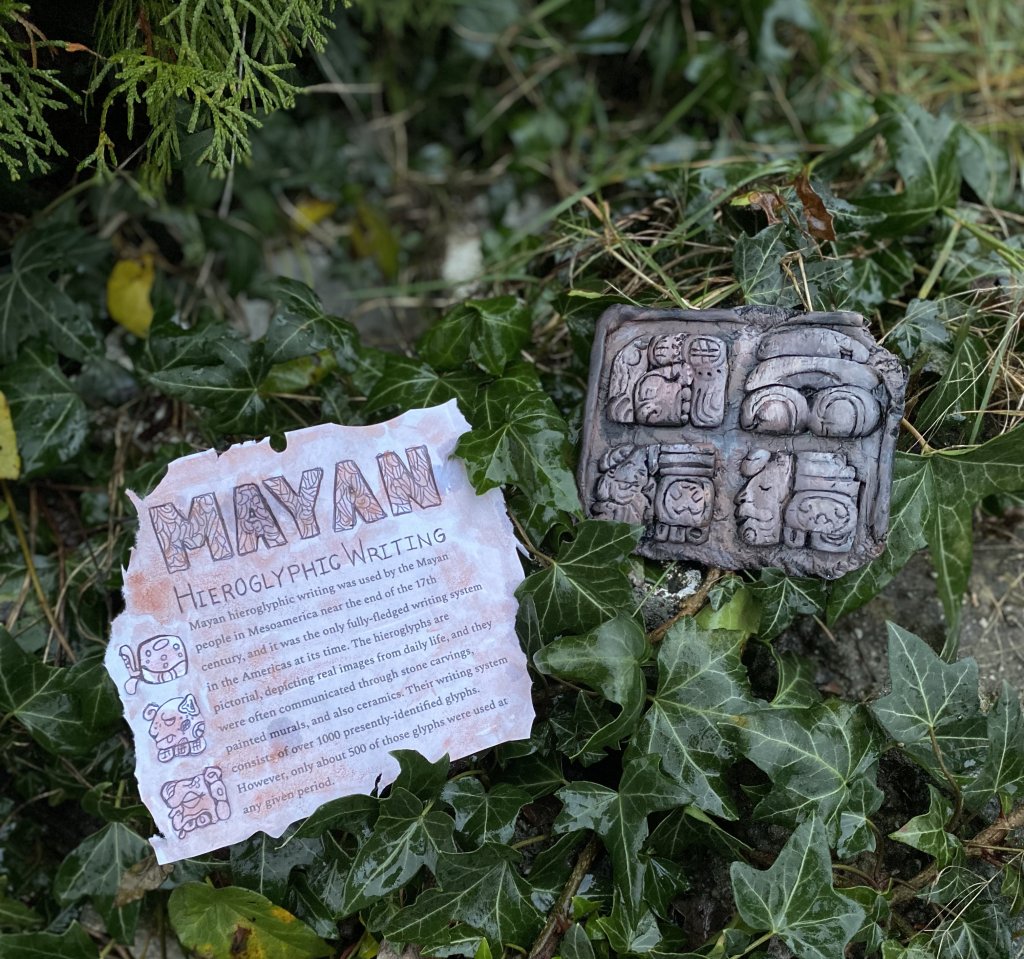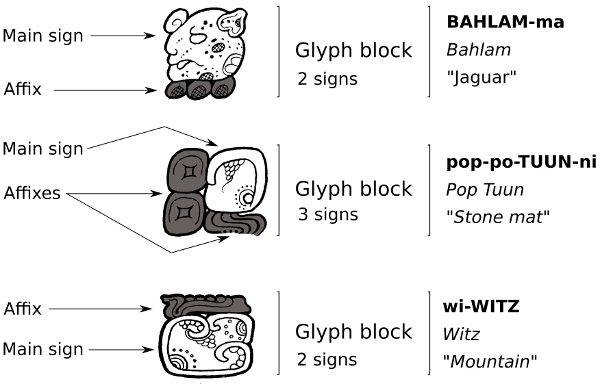For my artifact, I decided to go with the Mayan writing system that we touched on during our first Survey lecture. I gravitated towards this for a couple of reasons.

For one, it was a chance to use clay again! Ever since I’ve gotten into this program, personal work has kind of been pushed to the side, especially sculpture. I didn’t think I’d get an opportunity to use clay at all during the semester. I figured, since I was given the opportunity, now would be a good time to bring out those materials.
I was also fascinated by the glyphs themselves. I’ve never seen a writing system quite as beautiful as this one. Although we mentioned them in class, I was having a hard time understanding how you were supposed to read them. The combination of curiosity and aesthetic appreciation was what won me over in the end.

My choice of materials was, unfortunately, made out of pure convenience. Realistically, the texture of on air-dry clay would’ve looked more convincing. Cheaper ones tend to have more imperfections, like cracking, which would’ve been the desired look. However, I didn’t have the energy to wait out a 10-hour drying time. I went with polymer clay instead. It cures quickly after being exposed to heat, which speeds up the entire process significantly. But, the surface is relatively smooth. I made sure to add extra texture into the clay, dry brushing over with acrylic to enhance that, to make up for the lack of natural ‘wonkiness’.

If I had dedicated more time to the project, I would have probably done added more glyphs. It was just hard to know how many was enough. I didn’t want it to look like I wasn’t trying, but I honestly couldn’t afford to drop too much time into it. I made ended up making 4, because I got inspired by a photo I saw online.

The entire project took me about 7 hours total. It would have taken a lot longer, If I had tried to make glyphs I knew the meaning to. I read about how the Mayan system worked, and how each pictograph represented a word, but I got confused. It was a lot of information I didn’t feel super confident in representing. It felt more worthwhile to take from real examples of these glyphs, even if I didn’t know what it meant, instead of trying to structure my own word and butcher it completely.

I think I’d give myself a 12. I think the artifact itself looks nice, but I could’ve done much more. The same goes for the museum label. I don’t think either is incorrect by any means, they could just be expanded upon. I think that, aesthetically, I was successful in capturing the ‘look’ of the system, and the individual glyphs ended up turning out very nice.

Works Cited:
Britannica, T. Editors of Encyclopaedia (2007, February 21). Mayan hieroglyphic writing. Encyclopedia Britannica. https://www.britannica.com/topic/Mayan-hieroglyphic-writing
Davies, D. Maya Writing System and Hieroglyphic Script. www.mayaarchaeologist.co.uk. Retrieved 10 November 2021, from https://www.mayaarchaeologist.co.uk/public-resources/maya-world/maya-writing-system/.
Images Retrieved From:
https://www.worldhistory.org/article/655/maya-writing/
https://en.wikipedia.org/wiki/Maya_script
https://www.historymuseum.ca/cmc/exhibitions/civil/maya/mmc04eng.html
